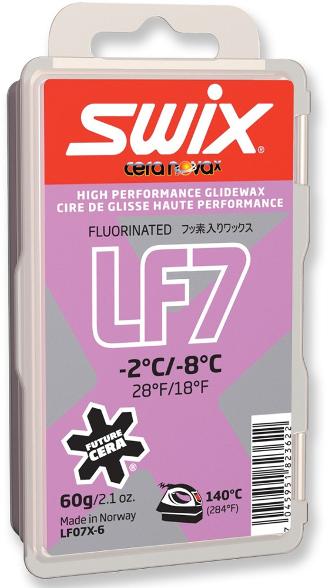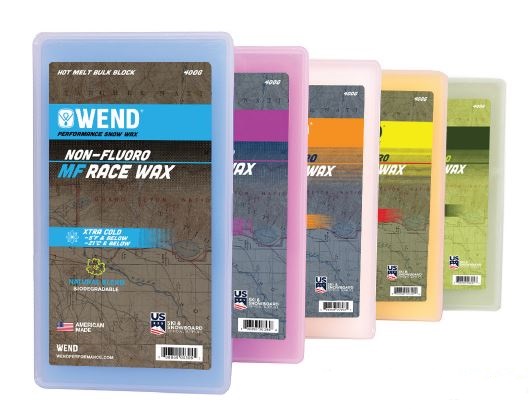
This article will take a deep dive into FIS’s ban on fluorinated ski waxes. This ban was announced in November 2019 but won’t be enforced until July 1st, 2021. From amateurs to professionals, these waxes have been the holy grail for ski racers everywhere. Information for this article was gathered from an interview with Chris Read, the head ski tech at Smooth Rides in Truckee, California. Chris has been a ski tech for the past fourteen years, and his tuning wizardry has sent multiple athletes to the World Cup.
What are fluorinated waxes?
According to Chris, “fluorinated waxes are used in all top-level ski and snowboard disciplines in which time is involved.” This includes downhill racing, skier/snowboard cross, nordic skiing, etc. These waxes contain per and poly-fluoroalkyl substances (PFAS), which are artificial chemicals that help to increase the glide on snow by reducing friction. These waxes are hydrophobic and repel moisture which is what makes them so fast. Additionally, due to their chemical makeup, floral waxes break down very slowly, meaning this hydrophobic layer stays on the ski throughout the race.

Why are fluorinated waxes so bad?
PFAS in fluorinated waxes are extremely harmful to people, plants, animals, and the environment. According to the Environmental Protection Agency (EPA), PFAS “are very persistent in the environment and the human body — meaning they don’t break down and they can accumulate over time.” Unfortunately, the hardiness of fluorinated waxes that contributes to their effectiveness is also why they are so bad for people and the environment.
PFAS have been known to cause an extensive list of adverse health impacts in humans, including liver damage, thyroid disease, decreased fertility, high cholesterol, obesity, hormone suppression, and cancer. PFAS make their way directly into our water supply as the snow melts, exposing millions of people, plants, and animals to these harmful chemicals.
The process of waxing skis with fluorinated waxes is extremely harmful to the person applying the wax. Many ski technicians are already exposed to harmful aerosolized chemicals daily, including fumes from ptex and epoxy. Fortunately, according to Chris, “most ski techs have moved away from ironing on fluoro waxes.” This has helped to reduce the amount of fluoro fumes that they are inhaling. “Most ski techs that travel to World Cup events use a machine that rolls the wax onto the ski bases. This means that the only time the ski techs are inhaling fluoro fumes is when they are buffing out the bases.” Regardless of how fluoro waxes are applied, keep your trusty ski technician safe by avoiding these toxic waxes.

What prompted FIS to ban fluorinated waxes?
When research came out showing how harmful PFAS are to the environment, the EPA immediately began cracking down on products using these chemicals. A few years back, the European Environment Agency went to the same level of regulation as the EPA and gave companies one year to adhere to the new guidelines.
“A lot of the main wax companies buy their fluoros from a third party and then mix them into their wax. The companies doing that didn’t change their formula. They said that they did, but they didn’t and as a result, got hit with huge fines by the European Environment Agency.”
-Chris Read Head Ski Tech at Smooth Rides in Truckee
This enforcement of the new PFA regulation by the European Environment Agency set the stage for FIS further cracking down on the use of fluorinated waxes.
What will be used instead?
As of now, the next best thing to fluorinated waxes are hydrocarbon waxes. Hydrocarbon waxes are what everyday recreational skiers have been using for years. According to Chris, “both hydrocarbon and fluoro ski waxes are petrol-based and are created using an oil byproduct.” Fluorinated waxes are the same as hydrocarbon waxes except that they have some or all of their hydrogen atoms replaced with fluorine atoms. In the absence of fluorine atoms, hydrocarbon waxes still create a hydrophobic surface, but they do not repel water as strongly as fluorinated waxes. While hydrocarbon waxes don’t contain PFAS, they still make their way into the watershed. For this reason, according to Chris, “many companies have started to use plant-based oils as opposed to oil byproducts because they are nontoxic.”
According to Chris, the best non-fluorinated race wax he has tried is Wend Waxworks Non-Fluoro Race Bar with Meadowfoam. Chris had the opportunity of testing this wax last year and claims “it wasn’t fluoro fast, but it was pretty dang close.” The Meadowfoam in the wax helps the wax to penetrate deeper while simultaneously allowing the base to absorb more. This deeper penetration and stronger adhesion allows Wend’s wax to have the durability and performance of a fluorinated wax.

What are Chris’s thoughts on the recent fluorinated wax ban?
Chris has mixed feelings about the new ban on fluorinated waxes. On the one hand, he is happy because he will no longer be exposed to these harmful chemicals. Additionally, he is thankful that he will no longer be contributing to polluting the environment and exposing others to PFAS.
On the other hand, Chris feels that “FIS jumped the gun on banning fluorinated waxes.” They originally announced that fluorinated waxes would be banned at the beginning of the 2020-2021 season. However, they have since moved that date back to July 1st, 2021, to “conduct more laboratory and field testing.” Basically, this means that they still do not have a consistent way of testing for fluoros. If FIS has “banned” fluorinated waxes, but they have no way of testing if fluorinated waxes are being used, this creates a moral grey area in which some athletes will continue using fluorinated waxes while others will not. Those who break the rules and use fluorinated waxes will have a significant competitive advantage over those who do not, creating an unfair playing field riddled with cheating.
Overall, Chris is happy that fluorinated waxes will no longer be allowed. Still, he feels that “FIS should have given ski wax manufacturers more time to come up with alternatives and that they should have had a testing procedure in place before announcing the ban.”